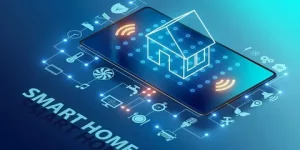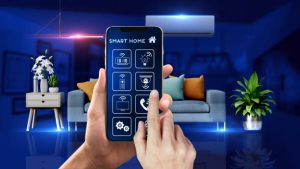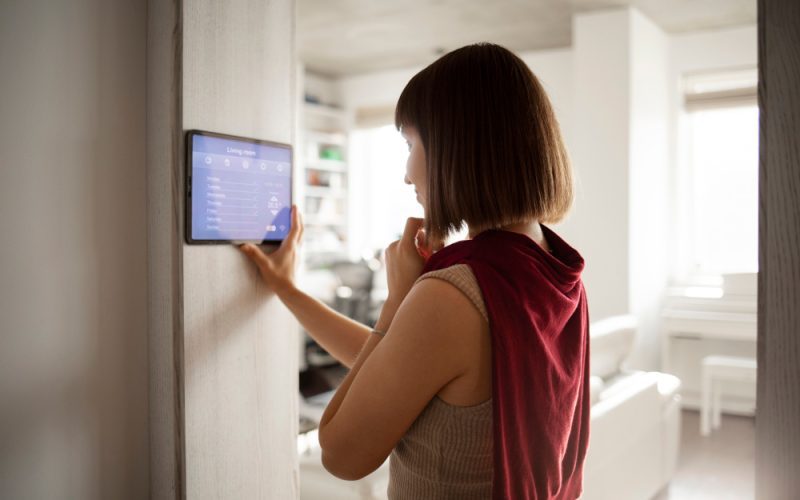In today’s world, home security has taken on a new dimension thanks to the rise of smart technology. With the integration of advanced devices and systems, homeowners are now able to monitor, control, and enhance their security measures in ways that were once unimaginable. This article explores how smart home security is transforming the landscape of home safety, its numerous benefits, and compelling case studies that illustrate its effectiveness.
Understanding Smart Home Security

Smart home security encompasses a wide range of devices and systems that connect to the internet, allowing homeowners to monitor and manage their security remotely. These technologies include smart cameras, doorbell cameras, smart locks, motion detectors, and complete home automation systems. By utilizing smart technology, homeowners can create a comprehensive security strategy tailored to their needs.
The Evolution of Home Security
Traditionally, home security relied on basic measures such as locks, alarms, and neighborhood watch programs. While effective to an extent, these methods lacked the real-time monitoring and control that modern technology offers. The advent of smart technology has revolutionized this field, providing homeowners with enhanced capabilities and convenience.
Benefits of Smart Home Security
Remote Monitoring and Control
One of the primary advantages of smart home security is the ability to monitor your home remotely. Smart cameras and alarm systems can be accessed via smartphone apps, enabling homeowners to check on their property from anywhere in the world. This remote access provides peace of mind, especially when traveling or during long periods away from home.
Real-Time Alerts
Smart security systems offer real-time notifications for any unusual activity. Whether it’s a door opening unexpectedly or movement detected in a restricted area, homeowners receive instant alerts. This feature allows for a quick response, potentially deterring intruders before they can act.
Integration with Other Smart Devices
Smart home security systems can seamlessly integrate with other smart devices in your home. For example, smart locks can work in conjunction with smart lights to create the illusion that someone is home, even when the house is empty. This integration enhances overall security while adding convenience to everyday life.
Enhanced Surveillance Options
With high-definition video cameras and night vision capabilities, smart security cameras provide clear and detailed footage. Many systems offer cloud storage options, allowing homeowners to review footage from specific incidents or monitor their property over time.
User-Friendly Interfaces
Most smart security systems come with intuitive apps that are easy to navigate. This user-friendly design ensures that homeowners, regardless of their tech-savviness, can manage their security effectively. Features like voice commands and customizable settings make the experience even more accessible.
Cost-Effectiveness

While the initial investment in smart home security devices may seem high, they can save homeowners money in the long run. Many insurance companies offer discounts for homes equipped with smart security systems, recognizing their effectiveness in preventing theft and damage.
Case Studies of Smart Home Security in Action
The Johnson Family
The Johnson family, living in a suburban neighborhood, decided to invest in a smart security system after a series of break-ins in their area. They installed a combination of smart cameras, a video doorbell, and smart locks.
Results:
- Increased Awareness: The family could monitor their home remotely. The video doorbell alerted them whenever someone approached their front door, allowing them to interact with delivery personnel without opening the door.
- Deterrence: After installing the cameras, there was a noticeable decline in suspicious activity around their home. The visible presence of security cameras acted as a deterrent for potential intruders.
Urban Apartment Complex
A large urban apartment complex installed a smart security system featuring access control, surveillance cameras, and an intercom system linked to residents’ smartphones.
Results:
- Improved Access Control: Residents could grant access to guests remotely via their smartphones, eliminating the need for physical keys and enhancing security.
- Incident Response: The management team received instant alerts for any unauthorized access attempts. This capability allowed them to respond quickly, reducing the likelihood of theft and vandalism.
The Garcia Home

The Garcia family embraced a fully integrated smart home system, including smart lights, locks, and a security camera network.
Results:
- Automation and Scheduling: They programmed their lights to mimic their daily routines, creating the illusion of occupancy. This simple act significantly improved their home’s security.
- Enhanced Emergency Response: When the security system detected a break-in, it immediately notified local law enforcement, resulting in a quick apprehension of the intruder.
Examples of Smart Home Security Devices
Smart Cameras
Brands like Ring and Arlo offer advanced features, such as motion detection, two-way audio, and night vision, making them ideal for comprehensive surveillance.
Smart Doorbells
Smart doorbells, such as those offered by Nest and Ring, allow homeowners to see and communicate with visitors in real time, even when they are not at home.
Smart Locks
Smart locks from companies like August and Schlage provide keyless entry, allowing homeowners to grant temporary access to guests or service personnel without needing to be physically present.
Home Security Systems
Comprehensive systems, such as those offered by ADT and Vivint, integrate multiple devices, providing a cohesive security solution tailored to the needs of the homeowner.
Future Trends in Smart Home Security
As technology continues to evolve, so will the capabilities of smart home security systems. Some anticipated trends include:
Artificial Intelligence (AI) Integration
AI can enhance smart security systems by improving threat detection and response. For example, AI algorithms can differentiate between a pet moving in front of a camera and a potential intruder, reducing false alarms.
Increased Automation
Future systems will likely offer more automation, allowing for greater control over all smart devices in the home. Homeowners may be able to program scenarios where lights turn on, doors lock, and cameras activate when they leave for work.
Enhanced Privacy Features
With increasing concerns over data privacy, manufacturers will need to prioritize user privacy in their devices. Future smart security systems may offer more transparent data handling practices and increased user control over data sharing.
Integration with Emergency Services
We may see deeper integration between smart home security systems and emergency services. For instance, systems could automatically alert local police or fire departments in the event of a break-in or fire.
Conclusion
Smart home security has transformed how we think about and implement safety measures in our homes. With the benefits of remote monitoring, real-time alerts, and integration with other smart devices, homeowners now have access to powerful tools to protect their property and loved ones. The compelling case studies discussed highlight the effectiveness of these technologies in real-world situations, demonstrating that investing in smart home security is a step towards enhanced safety and peace of mind.
As technology continues to advance, the future of smart home security promises even greater capabilities, making it an essential component of modern home living. For homeowners looking to improve their security, embracing smart technology is not just a trend; it’s a smart choice for a safer tomorrow.












